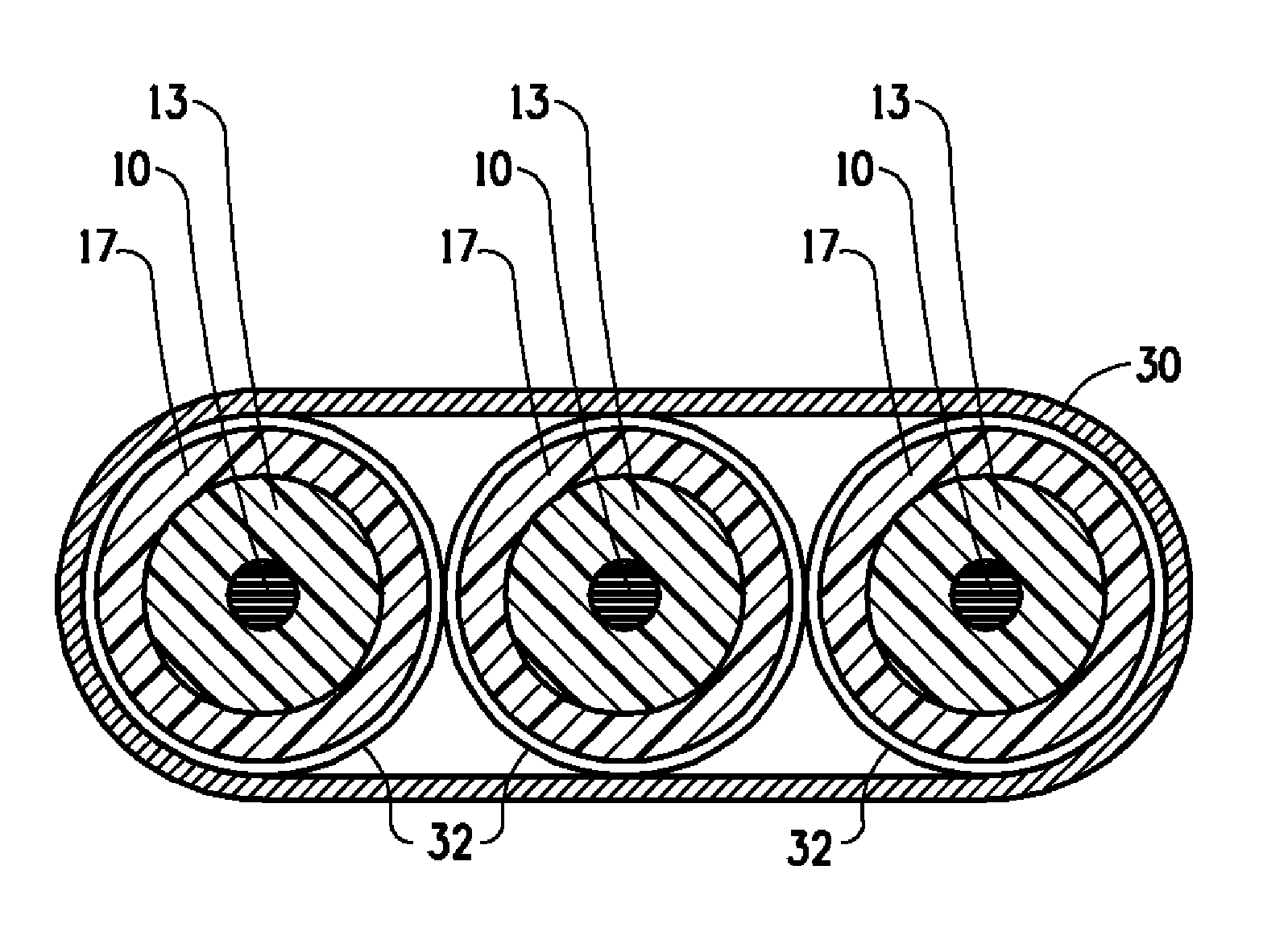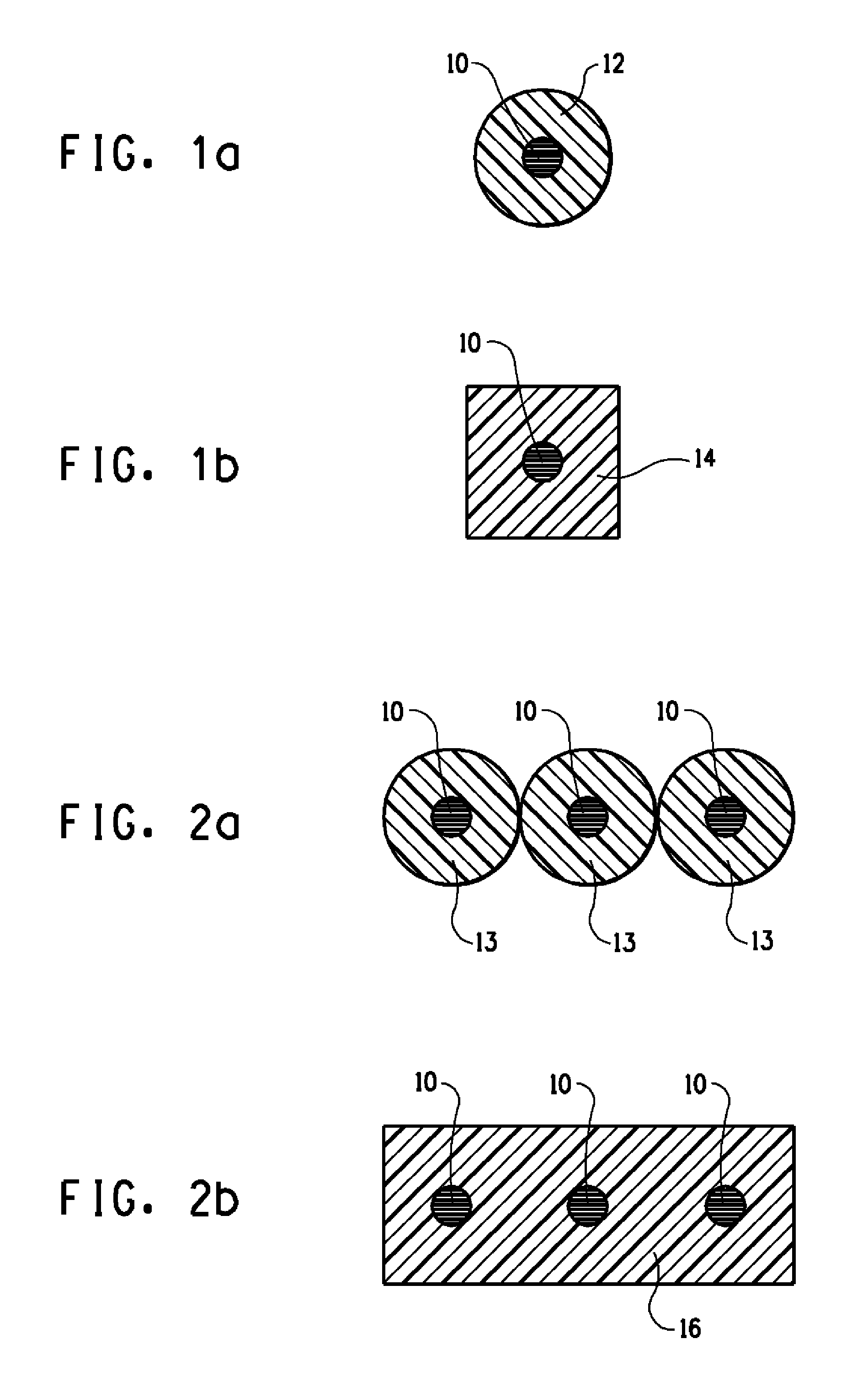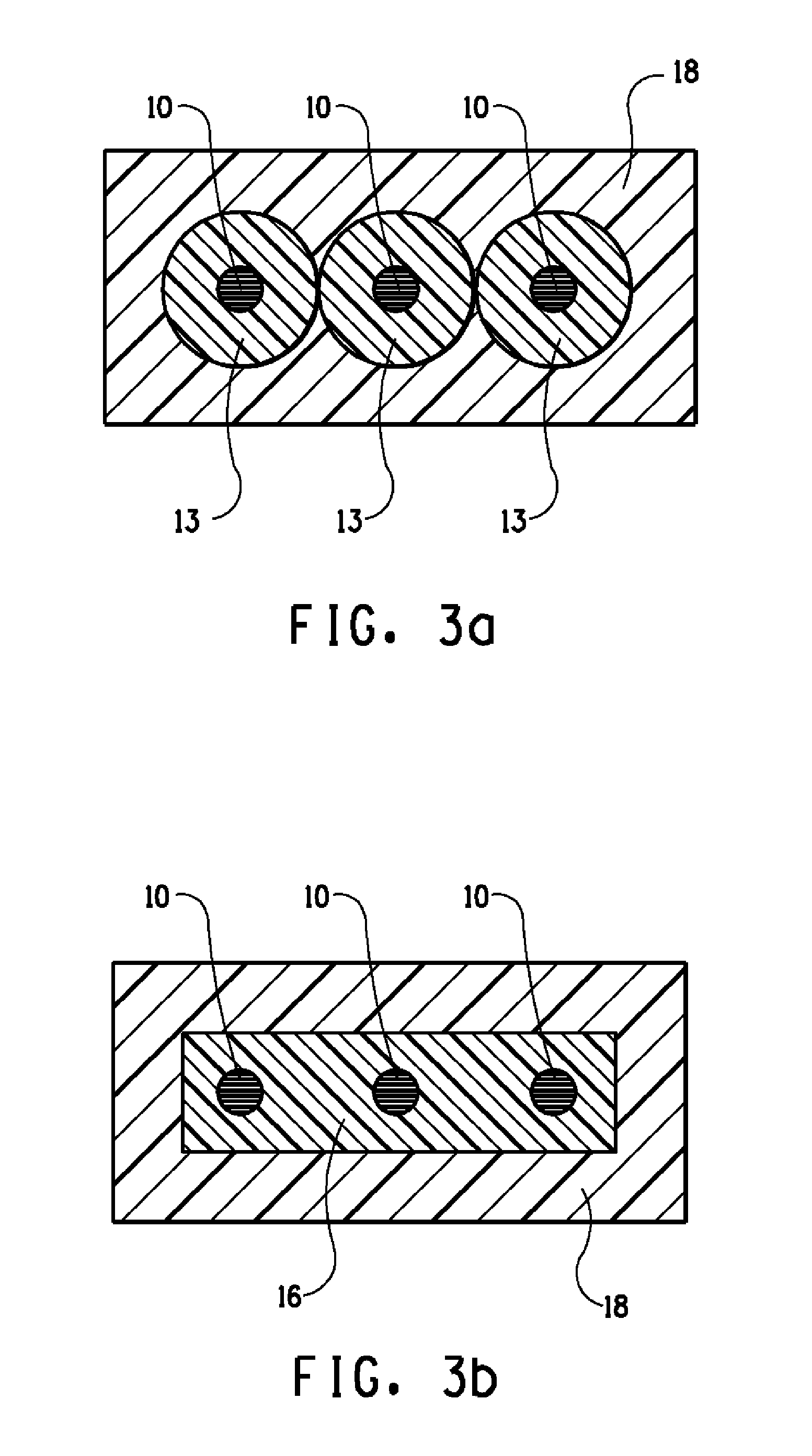ESP Power Cables
a technology of power cables and insulating conductors, applied in the direction of power cables, cables, insulated conductors, etc., can solve the problems of high cost, cumbersome manufacture, and poor protection of xlpe against hydrogen sulfid
- Summary
- Abstract
- Description
- Claims
- Application Information
AI Technical Summary
Benefits of technology
Problems solved by technology
Method used
Image
Examples
examples
[0106]A layer (sheet) of PFA 0.5 mm thick is subjected to the decompression test of NORSOK M-710 simulating decompression in an armoured. The PFA has a melt flow index of 5.2 g / 10 min and melting temperature of 305-310° C. The layer is placed in a holder, which in turn is placed in a pressurization cylinder which is heated to greater than 200° C. The cylinder is charged and pressurized with a gaseous composition which is 90% methane and 10% carbon dioxide to 5 000 psi (34.5 MPa). Decompression is carried out by release of the gaseous composition from the cylinder to obtain a pressure reduction of 1 000 psi / min (6.9 MPa / min). When the interior of the interior of the cylinder reaches atmospheric pressure, the PFA layer is removed and inspected. No evidence of decompression sensitivity is present, i.e. there is no change in layer thickness, indicating the absence of swelling of the layer during decompression as evidenced by there being no tearing or bubbling within the layer thickness....
PUM
| Property | Measurement | Unit |
|---|---|---|
| melt flow index | aaaaa | aaaaa |
| thick | aaaaa | aaaaa |
| thickness | aaaaa | aaaaa |
Abstract
Description
Claims
Application Information
 Login to View More
Login to View More - R&D
- Intellectual Property
- Life Sciences
- Materials
- Tech Scout
- Unparalleled Data Quality
- Higher Quality Content
- 60% Fewer Hallucinations
Browse by: Latest US Patents, China's latest patents, Technical Efficacy Thesaurus, Application Domain, Technology Topic, Popular Technical Reports.
© 2025 PatSnap. All rights reserved.Legal|Privacy policy|Modern Slavery Act Transparency Statement|Sitemap|About US| Contact US: help@patsnap.com



